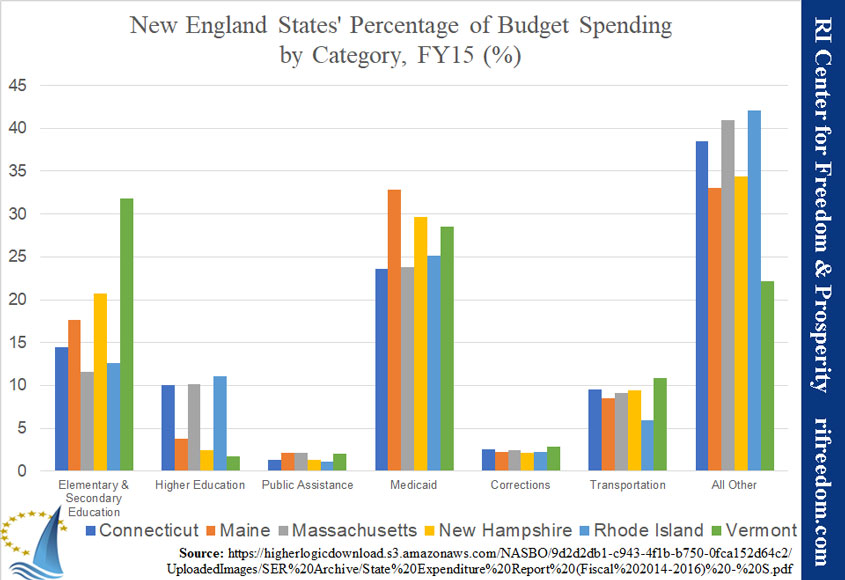Not Just Spending, but That Upon Which It Is Spent
Reading about Illinois’s budget problems a little earlier today, an association nagged at the corner of my mind, and I remembered something from Table 5 of the National Association of State Budget Officers (NASBO) report comparing the states. Specifically, in fiscal year 2015, Illinois was near the top of the list when it came to the percentage of its budget spent on “other” expenditures — that is, things other than elementary & secondary education, higher education, public assistance, Medicaid, corrections, and transportation.
The states higher than Illinois seem generally to have unique circumstances (Wyoming, Oregon, Alaska, and Hawaii), and with 43.7% of the budget going to “other” expenditures, Illinois is way up there. What’s apt to catch a Rhode Islander’s attention is that our state is only two ranks behind Illinois (after Nevada), with 42.1%.
That, if you’re wondering, is the highest in New England. The percentages across New England are interesting, particularly in the degree to which they scuttle some clichés.
Two conspicuous myth busters are Massachusetts’s relatively low spending on education and Rhode Island’s relatively high spending on higher education. Also conspicuous is Rhode Island’s low spending on transportation.
Overall, though, notice that, with the exception of higher education, Rhode Island is typically in the bottom tier for all categories, to the benefit of “other.”
What is this “other”? And why do we need so much of it?
Of course, we need to keep in mind that these percentages might be a little misleading, inasmuch as the amount of total spending will make a big difference. Nonetheless, the results are interesting.


